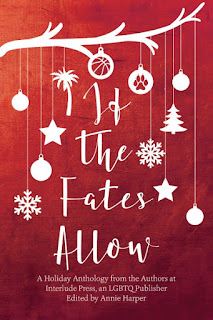The Jungle Book and The Second Jungle Book
Rudyard Kipling, 1894, 1895
Disney’s The Jungle Book, 2016
Challenge Book! Book Riot Read Harder Challenge 2016 – Read a book that was adapted into a movie, then watch the movie. Debate which is better
Okay, I may have done the challenge slightly backward, in that I saw the new live-action movie and then wanted to re-read the book. I have read the book before, but it’s been a few years. Of course, years before I read the books the first time, I saw the Disney animated movie, and the Chuck Jones specials (Rikki-Tikki-Tavi, The White Seal). But I read the Just So Stories before that... does that count? I guess the timeline is sort of a wash.
 Anyhow, none of that is the point. The point is that I adore these books, nearly unreservedly.
Anyhow, none of that is the point. The point is that I adore these books, nearly unreservedly. I say nearly, because a few of the short stories contain slightly awkward, outdated phrasing or attitudes, but VERY few, considering when these were written.
I don’t know what to cover. I guess first we should talk about Mowgli.
Mowgli is the central character of eight of the fifteen stories that make up the two volumes. (I’m not counting the fifteen connected poems at the moment.) Taken over these stories, his arc is complex and intriguing, and very little of it ends up in either Disney movie. The main points of the first three stories are the only aspects touched on: Mowgli’s adoption, his kidnapping by the monkey tribes, and his (first) fight with Sher Khan.
You think you know this story, about the man-cub raised by wolves, but do you know that he grows up to rule? He is the master of the jungle, and one with nearly all the peoples there, but never truly belonging. He himself uses the bat, caught between rodent and bird, as a metaphor for how he is neither animal nor man.
He receives guidance from wise mentors, but none of them can teach him to be human, only help him along the way and tell him that eventually he will leave. The kid in the new movie does a great job with the story he’s given, but it’s not a complicated story.
I should mention – in case you didn’t know, the new live action movie is an adaptation of the Disney animated movie from 1967. The new film is more nuanced than the animated movie, incorporating more elements from the books, but it’s still missing a lot of what I would want out of a true adaptation.
Let’s discuss a few of the other characters who show up in the movie.
Bagheera, the fierce, protective panther, is the closest to the version in the text, although a key point of his character is omitted - he understands Mowgli’s essential internal tension because he was born in captivity but knew he belonged in the jungle.
King Louie, who is a lot of fun in the new movie, was invented for the original Disney animated film. In the book, the Bandar-log (the monkey people) have no leader, and are scorned for their foolish behavior by most of the jungle peoples. They are part of a pattern - in many of the stories the most foolish or destructive animals are described as behaving like humans.
Sher Khan is fierce and frightening in the film, and murders other animals. In the book, he is dangerous to Mowgli, and he’s a predator, but he is more sneaky and nasty than dangerous to most of the larger creatures. I like that most of his villainy is accomplished not through blunt force, but through manipulating others and exploiting convention.
Kaa and Baloo are both entertaining and interesting characters in the new movie. I personally far prefer their original versions.
In the book, Kaa is not an enemy to Mowgli. The great snake’s wisdom and ferocity save Mowgli many times, even as his hypnotic powers make him a dangerous ally.
Baloo is much less funny in the books. He takes his job (teaching the young wolves the ways of life in the jungle) seriously, and tries to take advantage of Mowgli’s intelligence to teach him everything he can absorb, whether the boy wants it or not.
That’s a major thematic difference from the new film: in the movie, most of the animals object to Mowgli using his human intellect or ability to make tools. In the books, this is not an issue. If it helps, great, whatever it is. There are rules around pack behavior, and not spoiling the hunt for other hunters, but there are no rules against using whatever advantages you have. Bagheera even tells Mowgli to use fire, because it is the weapon of Man.
I want to be clear, I liked the movie. I liked it quite a bit, but in emotional impact, violence, environmental commentary, character complexity, and sheer visceral impression, I find the movie a pale shadow of the book.
And I haven’t even touched on Rikki-Tikki-Tavi and how amazing that story is, or many of the other stories. The White Seal could be studied in the same breath with Watership Down. The Miracle of Purun Bhagat is a subtle, beautiful tale. What the stories have in common is a deep respect for the animal world and the diversity of life and a poetry that speaks directly to my soul.
5 Stars – A Personal Favorite




Comments
Post a Comment
FYI: Most comments are moderated, and will not appear immediately.